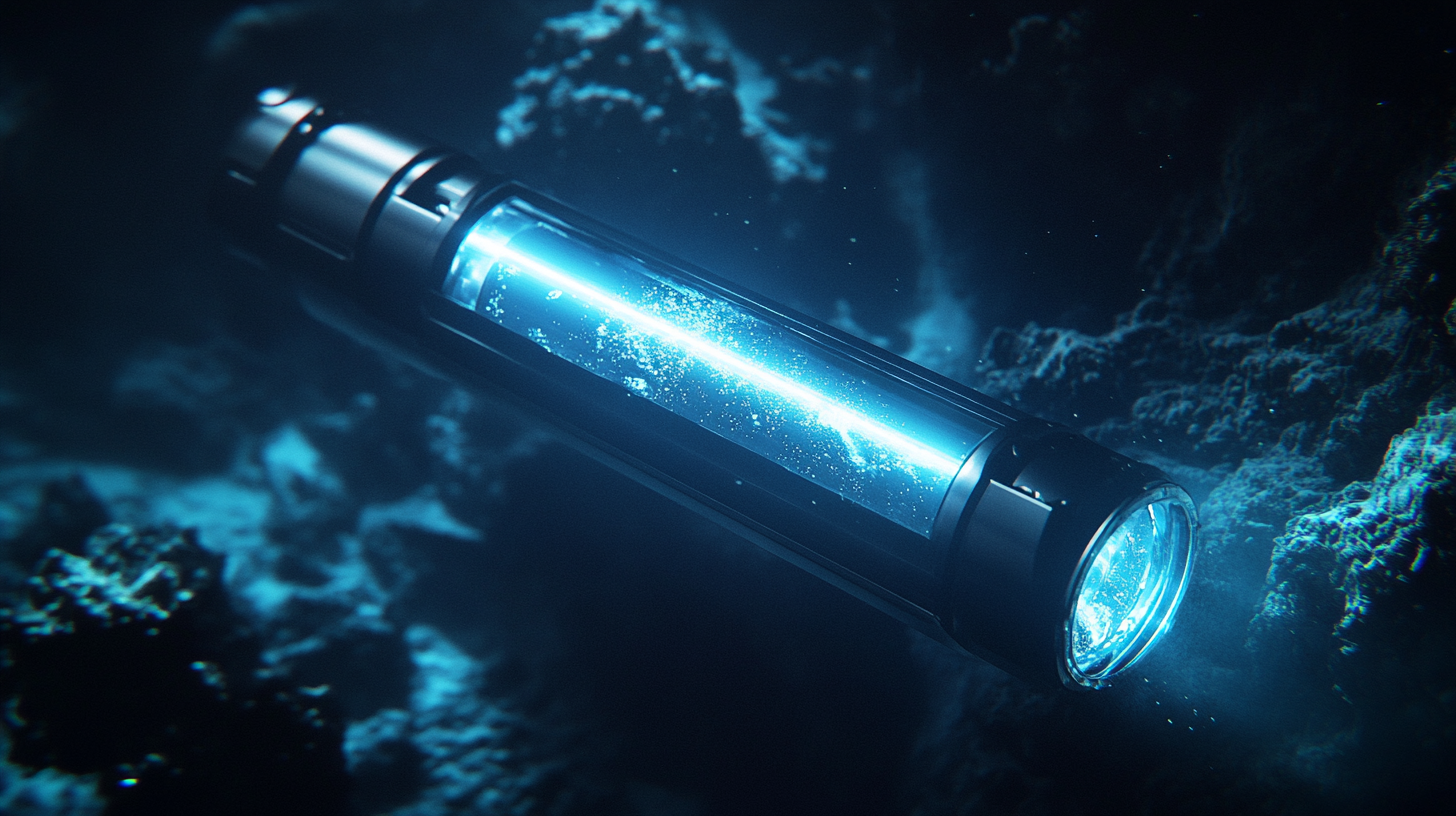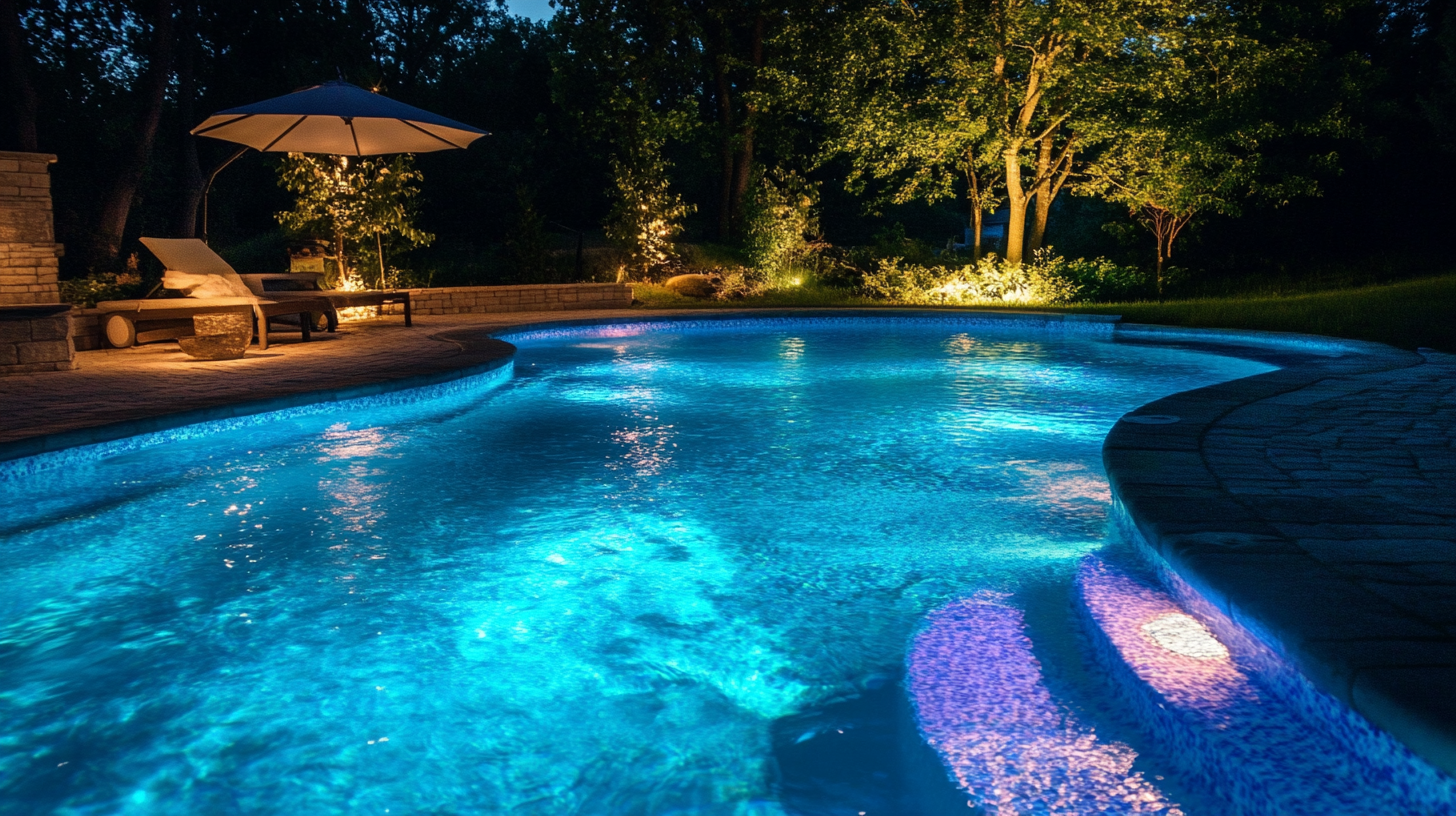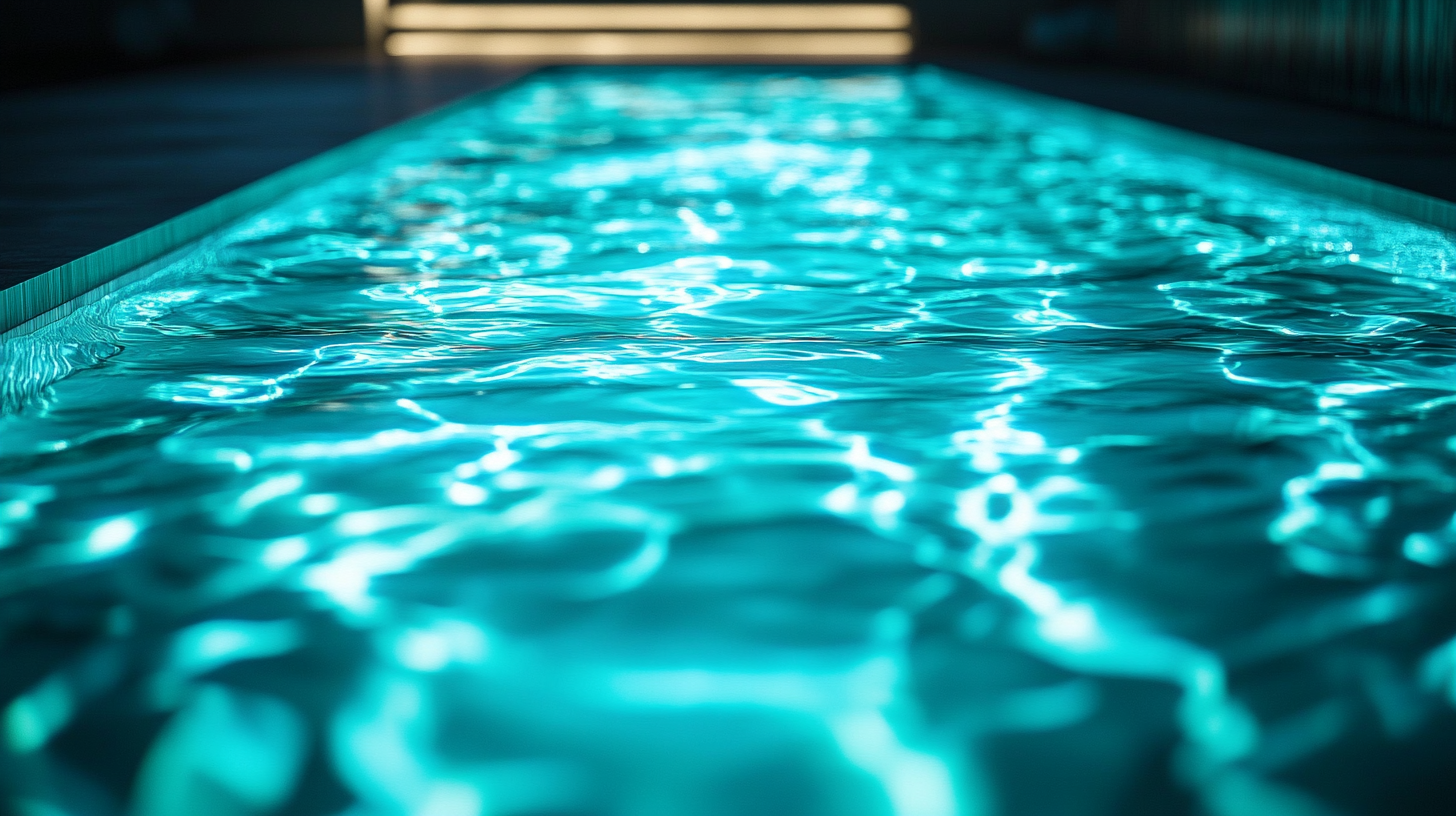The role of underwater lights in night diving from your boat
Underwater lighting technology has transformed the world of night diving, turning the mysterious underwater realm into a brilliantly illuminated playground. At the heart of this transformation are underwater lights, specially designed to function seamlessly in the challenging conditions of the ocean. These lights, often installed on the underside of the boat, work tirelessly to pierce through the inky depths, offering divers an unparalleled view beneath the surface.
The basic principle of underwater lighting involves the use of high-intensity LEDs or HID lamps. LEDs, in particular, have gained popularity due to their energy efficiency and longevity. These lights generate a powerful beam that can cut through turbid waters, providing excellent visibility even during night dives. Unlike traditional bulbs, LEDs emit a focused, bright light while consuming minimal power, which is a crucial feature considering the energy demands on any boat’s electrical system.
Understanding the colors produced by underwater lights is also essential. Many boat lights offer a variety of color settings, each with unique benefits. For instance, blue light tends to penetrate water better, allowing divers to see further and more clearly. Meanwhile, white light, though less effective at long distances, provides excellent illumination for observing the vibrant colors of marine life up close.
A vital aspect to consider when discussing underwater lighting technology is the durability and waterproofing of the lights’ housing. These lights must withstand not only consistent exposure to salt water but also the pressure of deep dives. High-quality underwater lights are typically encased in robust materials like stainless steel or bronze, with seals that prevent any water ingress.
Furthermore, modern advancements have led to the integration of smart technology into underwater lights, allowing divers to control the intensity and color settings remotely. This capability means you can easily adjust your lighting to suit different diving conditions or create the desired ambiance for a particular dive. As a result, these underwater lights enhance both the aesthetic quality of the diving experience and play a crucial part in improving diving safety by improving visibility and orientation underwater.
Enhancing safety during night dives
As the sun dips below the horizon, the aquatic world transforms itself into a domain of shadows and silhouettes—but when it comes to night diving, it’s not just an aesthetic choice; it’s a matter of safety. Underwater lights serve a pivotal role in ensuring diving safety by casting away the darkness that envelops the deep. These lights not only illuminate the subaquatic environment but also become a lifeline for divers, guiding them through what could otherwise be a disorienting and perilous journey.
Visibility is the cornerstone of safe night diving. Underwater lights, when strategically installed on your vessel, blanket the surrounding area with a luminous halo that makes it easier to identify potential hazards lurking beneath the surface. From rogue currents to entanglements in vegetation or discarded fishing gear, knowing what’s below can make all the difference. This enhanced visibility helps divers maintain natural buoyancy and prevents accidental collisions, ensuring a safe passage through the marine landscape.
Moreover, these boat lights help divers keep track of their orientation relative to the dive boat. With a clearly defined glow emanating from the boat, divers can gauge their distance and direction accurately, reducing the risk of drifting away and becoming lost. Their ability to find their way back effortlessly to the starting point is especially critical during emergency situations that may require a quick ascent.
Communication is another safety aspect significantly improved by the presence of underwater lights. As divers may not always rely solely on hand signals during night dives, brightly lit surroundings help them convey important instructions or warnings without misunderstanding. Glimpses of fellow divers’ faces, illuminated by well-placed lights, foster assurance and camaraderie, making the dive more enjoyable and secure.
Additionally, the safety benefits of these underwater luminaires are not restricted to divers alone. They also assist crew members on the boat in monitoring the divers’ bubbles and movements, which in turn enables a rapid response if a diver should encounter difficulties. The clearer view afforded by these lights aids in executing successful rescues, if required. With effective illumination securing both the divers and the overseeing team, night dives can transpire with a heightened sense of tranquility and readiness.
Creating an immersive diving experience
Beyond practicality and safety, underwater lights have a unique ability to transform night diving from a mere nocturnal activity into a truly enchanting experience. As the boat becomes a beacon of light cutting through the darkness, an ethereal world is revealed beneath the waves, teeming with life and mystery. The vivid colors of marine life, often subdued during daytime dives, pop against the illuminated backdrop, providing a visual feast that is as much artistry as it is exploration.
The realm of night diving, with the help of these innovative lights, is akin to an underwater theater where the play of light and shadow creates a mesmerizing spectacle. Fish that are shy during the daylight hours emerge, their scales shimmering in the glow. Bioluminescent organisms flare up in delightful displays, painting the water with a canvas of twinkling lights. This intimate encounter with the natural world is amplified by the soft hum of the ocean at night, providing a unique ambiance that speaks to the adventurous spirit within us all.
Moreover, underwater lights enable divers to observe behaviors that are rarely seen during the day. Many sea creatures are nocturnal, taking advantage of the cover of darkness to hunt, mate, or explore. With boat lights illuminating the scene, you might witness the mesmerizing dance of squid, the stealthy hunt of octopuses, or the gentle glide of stingrays cruising the sandy bottom. The opportunity to observe these rarer forms of marine life behavior adds a layer of discovery and educational richness to your dive.
The aesthetic elements provided by underwater lights also make it possible to photograph and capture footage that would otherwise remain out of reach. This underwater lighting creates the perfect stage for both amateur and professional photographers to capture images that are vivid and full of depth, allowing the colors and details of marine life to shine through. The resulting photographs can tell incredible stories and offer keepsakes of unforgettable underwater adventures.
The immersive experience created by underwater lights does not end with visual splendor. The surrounding ambiance also has a calming psychological effect, allowing divers to embark on a peaceful and mindful journey beneath the waves. The combination of the gentle light, the soft movement of water, and the serene nighttime environment encourages relaxation and a deep connection with the ocean.
While underwater lights are invaluable for ensuring safety, their role in enhancing the night diving experience cannot be overstated. They help turn the ocean into a living, vibrant world, offering an immersive adventure that’s as educational and exhilarating as it is visually striking. Whether you’re a seasoned diver or a beginner, the spellbinding allure of night diving beneath the glow of boat lights is sure to leave a lasting impression.
Choosing the right lights for your boat
When selecting underwater lights for your boat, several factors must be considered to ensure you maximize both the enjoyment and safety of your night diving experience. One of the most critical aspects is the type of light and its intended use, as this will dictate the kind of bulb, brightness level, and beam angle needed for optimal performance underwater.
Type of Light: The decision between LED and HID lights often depends on the specific requirements and preferences of divers. LEDs are renowned for their efficiency and longevity, making them an excellent choice for extended night dives. They consume less energy, which is crucial for preserving your boat’s battery life on longer trips. In contrast, HID lights, though more power-intensive, emit a brighter and sometimes broader beam, which can be favorable in darker waters.
Brightness and Beam Angle: Brightness is measured in lumens, and a higher lumen rating means a more vivid light, crucial for deep or murky waters. For comprehensive illumination, choosing lights with adjustable beam angles can be beneficial. A narrow beam is ideal for focusing on specific areas or objects, while a wide beam lights up a larger space, helpful for general navigation and maintaining overall diving safety.
Material and Construction: Given the harsh underwater environment, the construction material of your plunge lights should be robust. Opt for models made from corrosion-resistant materials like marine-grade stainless steel or bronze. Their durability ensures longevity, withstanding not just the corrosive nature of saltwater but also physical impacts you might encounter on the boat.
Color Options: Personalization through color is not just an aesthetic choice; it can significantly impact visibility. While white lights offer a clear view of what’s directly in front of you, blue or green hues penetrate water further, enabling divers to see a broader area. Some modern lights even allow for color adjustment, providing flexibility depending on diving conditions or desired ambiance.
Ease of Installation: Another consideration is the ease of installation. Some underwater lights are designed with a plug-and-play setup, making them simple for owners to mount themselves without professional help. These models usually come with detailed instructions, cutting down preparation time and getting you into the water more swiftly.
| Feature | Consideration |
|---|---|
| Type of Light | LED vs. HID |
| Brightness & Beam Angle | Lumens count and adjustability |
| Material | Corrosion-resistant metals |
| Color Options | Blue, White, Green; Adjustable |
| Installation | Plug-and-play availability |
Ultimately, the right choice of underwater lights for your night diving adventures hinges on balancing these factors against personal preferences and environmental conditions. The combination of efficiency, suitability, and adaptability gives you not just an exciting exploration opportunity but also the assurance of improved visibility and enhanced diving safety during your ventures beneath the waves.
Maintenance tips for underwater lights
To ensure your underwater lights remain reliable and effective for night diving expeditions, consistent and thoughtful maintenance is crucial. These lights, crucial elements in promoting diving safety and enhancing your overall experience, must be kept in optimal working condition to prevent any potential issues that could arise from neglect.
Begin your maintenance routine by regularly inspecting the lenses of the underwater lights for any signs of damage or cloudiness. Over time, the accumulation of marine growth, such as algae and barnacles, can obscure the light, diminishing its effectiveness. To combat this, gently clean the lenses with a non-abrasive cloth and a mild detergent to restore their clarity. A regular cleaning schedule will maintain the brightness and reach of your lights, vital for safe navigation during nocturnal dives.
The structural integrity of underwater lights is another consideration. Saltwater, while a diver’s domain, is notoriously corrosive. Be sure to examine the casing and mounting fixtures for signs of rust or wear. High-quality lights are often constructed from corrosion-resistant materials like marine-grade stainless steel or bronze, yet even these robust materials can suffer if not regularly checked. Apply a protective sealant if necessary to bolster the lights against the relentless environment of the sea.
Similarly, the electrical connections within the lighting system should not be overlooked. Secure all connections and inspect for loose wires or signs of corrosion which may affect performance. It’s advisable to periodically test the entire lighting system before embarking on a night diving adventure. A full-functionality check involves turning on the lights and observing for flickering or irregular output, both of which can indicate underlying electrical faults requiring immediate attention.
Furthermore, don’t ignore the battery system supporting your boat lights. Maintaining a fully charged and properly functioning battery is imperative to ensure maximum output and reliability. Routinely check the battery levels and replace batteries if they show signs of age or inefficiency. An unexpected failure could leave divers in the dark—both literally and figuratively—sacrificing diving safety and the pleasure of the illuminated marine world.
Lastly, consider leveraging protective storage solutions when the boat is not in use. Covering the lights and ensuring the vessel is stored in a manner that limits exposure to harsh weather will extend the lifespan of both the lights themselves and their mounting systems. Adopting these simple yet effective maintenance strategies ensures that your underwater lights remain brilliantly dependable, setting the stage for every exciting night dive to come.


